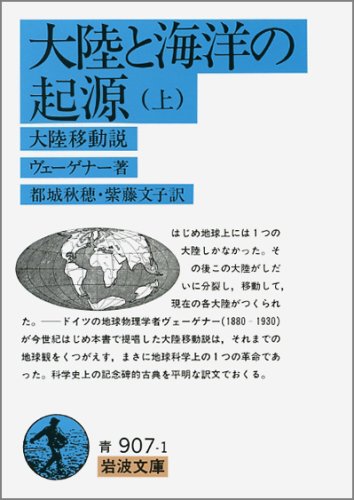3 0 0 0 OA 鉄-ニッケル系の金属相鉱物
- 著者
- 都城 秋穂
- 出版者
- Japan Association of Mineralogical Sciences
- 雑誌
- 岩石鉱物鉱床学会誌 (ISSN:00214825)
- 巻号頁・発行日
- vol.51, no.4, pp.162-172, 1964-04-05 (Released:2008-08-07)
- 参考文献数
- 34
2 0 0 0 OA 変成鉱物の化学組成の累進的変化
- 著者
- 都城 秋穂
- 出版者
- Tokyo Geographical Society
- 雑誌
- 地学雑誌 (ISSN:0022135X)
- 巻号頁・発行日
- vol.99, no.3, pp.217-229, 1990-06-25 (Released:2009-11-12)
- 参考文献数
- 10
- 被引用文献数
- 1 1
The chemical compositions of solid-solution minerals in metamorphic rocks are controlled by equilibria not only of exchange reactions but also of net-transfer reactions among coexisting minerals. In rocks with a variance of 2, the compositions of solid-solution minerals are functions of temperature and pressure alone as is illustrated in Figs. 2 and 3, and so can be used as a measure of the P-T condition under which the rocks were recrystallized. In rocks with a variance of 3 or greater, on the other hand, the compositions of solid-solution minerals vary not only with temperature and pressure but also with the bulk-rock composition (Fig. 4). The growth of zoned crystals causes fractional crystallization, resulting in a change of composition of the reacting system. If the variance of the system is 3 or greater, the change of the composition of the reacting system causes a change in the composition of the crystallizing mineral.Pelitic metamorphic rocks are commonly simplified as belonging to the 6-component system : Al2O3-FeO-MgO-K2O-SiO2-H2O. In this case the mineral assemblages may be shown on the THOMPSON AFM diagram. Any 3-AFM phase assemblage in the diagram has a variance of 2, whereas any 2-AFM phase assemblage has a variance of 3.In the paragenetic relations of garnet, MnO commonly plays an essential role, and so garnet-bearing metapelites are commonly treated as belonging to the 7-component system : Al2O3-FeO-MgO-MnO-K2O-SiO2-H2O. Most metapelites with MnO-rich garnet have a variance of 3 or greater. Garnets in low- and middle-grade metamorphic rocks are usually strongly zoned. Hence, the composition (or the MnO content) of garnet is strongly influenced by the initial bulk-rock composition and fractional crystallization. SPEAR (1988) has calculated the progressive compositional change of garnet that grows not only under complete equilibrium condition but also with fractional crystallization for garnet-bearing 3-AFM phase assemblages that are observed in the Barrovian sequence.In the Sanbagawa high P/T ratio metamorphic belt, progressive metamorphism is represented by a sequence of the chlorite zone, garnet zone (with no biotite), and biotite zone (with garnet) for metapelites. In other words, garnet begins to occur at a considerably lower temperature than biotite. In the garnet zone, garnet probably forms by reaction involving Tschermak exchange component like (4), whereas in the biotite zone, garnet forms by the same reactions as in the garnet zone of the Barrovian sequence. Such a change in the garnet-producing reactions between the two zones may cause a break in the MnO and FeO curves in the composition profile of zoned garnets. Some of the observed features of the compositional trends of garnets could be ascribed to the effect of a variation in bulk-rock composition.The average composition of zoned garnets in metapelite shows a progressive decrease of the MnO content with increasing metamorphic grade. This is probably related mainly to a progressive increase of the amount of garnet. Higher pressure tends to increase the amount of garnet, and to decrease its MnO content.
2 0 0 0 大陸と海洋の起源 : 大陸移動説
- 著者
- ヴェーゲナー著 都城秋穂 紫藤文子訳
- 出版者
- 岩波書店
- 巻号頁・発行日
- 1981
1 0 0 0 OA 杉健一の生涯と業績
- 著者
- 都城 秋穂
- 出版者
- 地学団体研究会
- 雑誌
- 地球科学 (ISSN:03666611)
- 巻号頁・発行日
- vol.1961, no.56, pp.35-38a, 1961-09-25 (Released:2017-07-24)
1 0 0 0 杉健一の生涯と業績
- 著者
- 都城 秋穂
- 出版者
- 地学団体研究会
- 雑誌
- 地球科學 (ISSN:03666611)
- 巻号頁・発行日
- no.56, pp.35-38a, 1961-09-25
1 0 0 0 OA 鉱物学・岩石単上の術語の日本語による表現法について
- 著者
- 都城 秋穂
- 出版者
- Japan Association of Mineralogical Sciences
- 雑誌
- 岩石鉱物鉱床学会誌 (ISSN:00214825)
- 巻号頁・発行日
- vol.55, no.4, pp.179-184, 1966-04-05 (Released:2008-08-07)
- 被引用文献数
- 1 1
1 0 0 0 OA 火山岩のなかのパイラルスパイト・ガーネット
- 著者
- 都城 秋穂
- 出版者
- 日本地質学会
- 雑誌
- 地質學雜誌 (ISSN:00167630)
- 巻号頁・発行日
- vol.61, no.721, pp.463-470, 1955-10-25
- 被引用文献数
- 5 22
A pyralspite garnet from a cavity in rhyolite at the Thomas Range, Utah, U., S., A., was analysed as shown in Table 1., It is high in Mn content, being mainly composed of the spessartine and almandine molecules., Pyralspites occurring as porphyritic minerals in volcanic rocks are poorer in Mn than those from cavities and lithophysae in volcanic rocks (Fig., 1)., Pyralspites from granites are generally poorer in Mn than those from pegmatites (Fig., 2)., According to a crystallo-chemical consideration, pyralspite poor in Mn is stable under a narrower range of physico-chemical conditions than those richer in Mn., The physico-chemical conditions under which porphyritic minerals and granites were formed, were more favourable for the generation of pyralspite than those under which cavities, lithophysae, and pegmatites were formed., Therefore, pyralspite poor in Mn could be generated as porphyritic minerals and in granites, but not in cavities, lithophysae, and pegmatites.,




